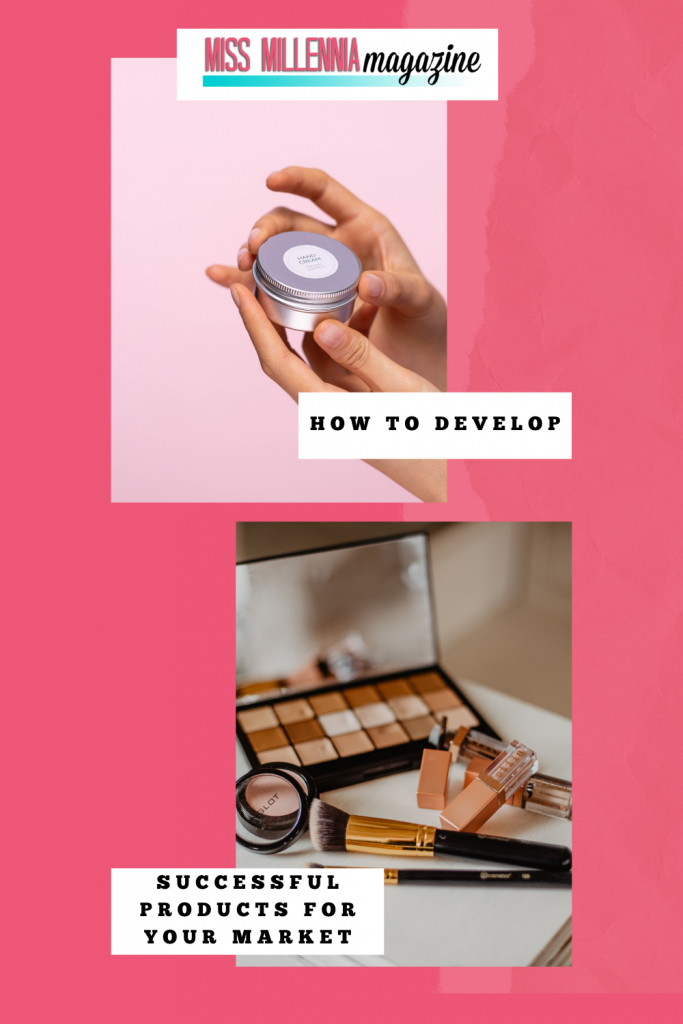How To Develop Successful Products For Your Market

What do successful products look like?
In the world of business, success is a delicate concept to explain and measure. How much do you need to sell to call it a success? Is a product successful if it recovers its costs? What is the ROI of success?
Let us dive into the story of successful products that help define what it means to build something that can drive business growth.
Coca-Cola, the brand, was first introduced in 1886. While the brand has tried introducing new formulas with mixed reactions, Coca-Cola is now a staple drink in many homes. With over 2 billion beverages consumed daily worldwide, it is fair to say that for Coca-Cola, success means longevity.
The iPhone was first launched in 2007 by Steve Jobs. Introduced as a computer you can hold in your hand, the first generation iPhone sold one million units in only 74 days. For Apple, a successful product means outwitting competitors with innovative technology unavailable elsewhere. Apple transformed the mobile market forever, gaining a remarkable advantage over its competition.
The Nintendo Wii was first released in 2006, perfectly on time for Christmas gifts. The gaming console sold like hotcakes, with over 100 million units sold worldwide since its first release. The Wii console revolutionized the gaming industry, introducing non-gamers to accessible and family-friendly video games. For Nintendo, a successful product is a product that can reach out to a completely new audience and convert it.
The bottom line: A successful product could mean a variety of things. Yet, success is measured over time on how the product influences:
- The market
- The audience
- The consumption in the long term
So what do you need on your side to attempt to reproduce these successful product launches?

An Amazing Grasp of Market Trends
What are the trends, and how will they evolve over time?
It is the most important question any business owner should ask. Trends transcend the demand, as a trend is likely to create a gradual surge in demand over a long period of time. See, for instance, the adoption of the iPhone and all smartphones as a result. The first iPhone was launched in 2007. Approximately 15 years later, smartphones are a part of our everyday life. Steve Jobs not only understood the market trend and the slow shift towards accessible and easy-to-use and handle technology but also managed to create a product that didn’t exist yet. Therefore, understanding how to proceed to market trend analysis can be a game-changer when it comes to creating the right product for the right time.
Trends analysis shows customer behaviors and how they are influenced. More importantly, it also indicates how they are likely to evolve. Unlike demand, which reveals data for the present time, trends data can be used to forecast future demand and threats. As a result, you can develop a product that matches what today’s customers need tomorrow.
A Fantastic Team of Real-Life Testers
Let’s be honest; there is no perfect product. That’s precisely why you need to test and question everything. Having a team of testers can be tricky. But your interns can provide significant insights into the current market needs and mindset. Hiring interns can give you access to skills, knowledge, and labor at a lower cost. Internships are often paid; most interns expect to receive their work payment. However, unlike experienced workers, interns may not have the relevant skills. They are willing to learn and be shaped to meet the sector’s needs. As a result, they are inexpensive labor.
But they bring a unique set of qualities and competencies that you may not find elsewhere:
- They can provide in-depth testing for all products
- They can also compare to products or solutions they know or use
- They can push a product to its limit, revealing bugs or faults you may not have found, otherwise
- They can also provide an honest opinion, which people involved in the creative and building process can’t always deliver
- They can ask the right questions the customers will ask
More importantly, working with interns gives you access to a small group of test customers. So, you can sit down with them or record test sessions to monitor how they use your product and which frustrations and obstacles they hit. Sometimes, a process that appeared intuitive on paper may not reflect how real users interact with a product. Additionally, some of the off-hand comments interns can discuss between themselves can be relevant for the product team, such as:
- Complaining about the non-eco-friendly materials
- Wondering what your product brings that competitors don’t already have
- Stating they wouldn’t pay that much for the product
- Worrying about how individuals with disabilities could use the product
- Disliking the product
A Reliable Method of Production
The first iPhone sold one million phones in 74 days. When you think about it, it’s about 13,500 units per day. In other words, Apple needed to keep up with production levels to meet the demand in real-time. Indeed, production delays would have meant a couple of things for Apple at the time:
- Not being able to sell products when people wanted to buy them
- Being at risk that dissatisfied customers are not willing to wait until the product is available
- Being outranked by competitors who learned from the launch but prepared their production strategy better
- Potentially being forced to shut down to avoid bankruptcy
Not having the iPhone available in 2007 could have meant the end of Apple. So, if you are about to proceed with an innovative product launch, you want to make sure your production strategy is up for the challenge:
- Arrange for rapid production for electronic devices with time-saving solutions, such as MIS Electronics offers PCB assembly
- Reach out to suppliers long before you begin production to guarantee supply access and rapid delivery
- Manage logistics strategy to ensure materials are at the right place at the right time
- Hire experienced staff for flawless production
- Proceed to quality tests of your finished products before releasing them onto the market

A Buzz-Worthy Marketing Campaign
How do you get everyone to talk about your product even before it hits the shelves?
The answer is Marketing.
Coca-Cola failed to market its beverage in 1886, leading to selling less than 10 bottles per day. Thankfully, the brand managed to survive until now and has since been creating breathtakingly imaginative marketing campaigns.
On the other hand, Steve Jobs knew how to create a buzz. He used public conferences to introduce new concepts, introducing the iPhone in 2007 at the Macworld convention in San Francisco. When Jobs returned to Apple in 1997, he used the Macworld convention in Boston to make his first public speech, helping shift the brand’s image. His keynote presentations are now iconic. Why do they work? Because Jobs was a talented, inspiring, and entertaining public speaker, entirely portraying the future marketing campaigns of each product.
You may not be the next Steve Jobs. But you can create authentic, shareable, and entertaining content for your products:
- Youtube videos showing product concepts
- behind-the-scene videos and photos
- Instagram, TikTok, and Facebook campaigns with influencers
- Public presentation for the press
- Countdown until product release
- Testimonial of first product users
Your marketing strategy will ensure that you can communicate the idea of your product long before customers can buy it. This ensures you can prepare the market and create a demand when the product is completely new.
Successful products are long-lasting, market- and life-transforming. There is so much to learn from successful product launches, such as Coca-Cola, Wii, and iPhone! When planning a new product, you must prioritize trends research, testing, production, and marketing.










